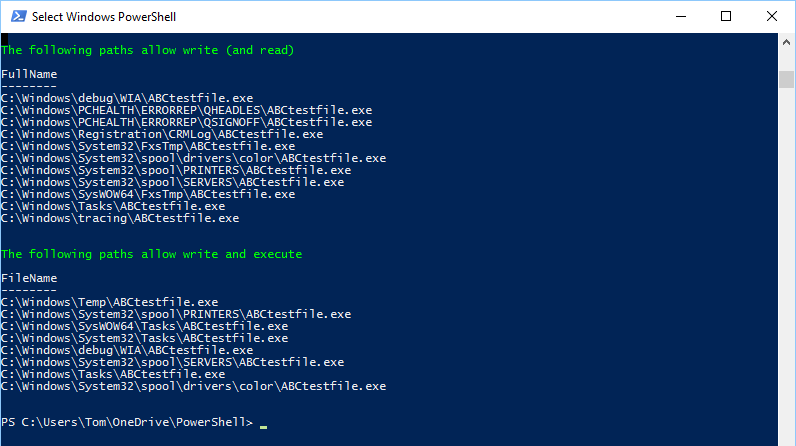

- #MICROSOFT APPLOCKER HOW TO#
- #MICROSOFT APPLOCKER SOFTWARE#
- #MICROSOFT APPLOCKER WINDOWS 7#
- #MICROSOFT APPLOCKER WINDOWS#
DENY: You can specify which files are not allowed to run in your environment, and for which users or groups of users.ALLOW: You can specify which files are allowed to run in your environment, and for which users or groups of users.

Allow members of the Everyone group to run apps that are located in the Program Files folder.Ī rule can be configured to use allow or deny actions:.

#MICROSOFT APPLOCKER WINDOWS#
Allow members of the Everyone group to run apps that are located in the Windows folder. Allow members of the local Administrators group to run all apps. You can automatically create executable rules, Windows Installer rules, script rules, and packaged application rules. Right-click the appropriate rule type for which you want to generate default rules automatically. These rules are intended to help ensure that the files that are required for Windows to operate properly are allowed in an AppLocker rule collection. Open the Advanced tab and enable the DLL rule collection.ĪppLocker includes default rules for each rule collection. Select the Configured check box for the rule collection that you are editing, and then verify that Enforce rules are selected. Use the enforcement setting for each collection to configure to Enforce rules, rules are enforced for the rule collection and all events are audited. In the Group Policy Object Editor at Computer Configuration > Windows Settings > Security Settings > Application Control Policies > AppLocker, the Windows AppLocker settings exist. #MICROSOFT APPLOCKER SOFTWARE#
Prevent trendy users from installing software per user. Offer an audit log of what kind of applications clients were running. Check which users are allowed to use the licensed program. Check which applications are allowed to run inside the company network. The following table lists the file formats included in each rule collection.ĪppLocker is worthy for organizations that have to accomplish any of the following jobs: These collections allow you to easily distinguish rules for different types of applications. The AppLocker console is ordered into rule collections, which include executable files, scripts, Windows Installer files, packaged apps, and packaged app installers, and DLL files. With this policy, administrators are able to generate rules based on file names, publishers or file locations on unique identities of files and specify which users or groups can execute those applications. Windows AppLocker lets administrators control which executable files are denied or allowed to be run. #MICROSOFT APPLOCKER WINDOWS 7#
Windows Applocker is a function that was introduced in home windows 7 and windows server 2008 r2 as a method to restrict the usage of unwanted Programs. Modify Script Default Rules to Allow an AppĬreating New Rules to Block an APP Introduction to Applocker What is applocker Policy? Modify Windows Installer Default Rules to Allow an App Modify Executable Default Rules to Allow an App Table of ContentĬonfigure the Applocker to Allow/Deny Execution of an App
#MICROSOFT APPLOCKER HOW TO#
Run the below command to make sure the Application Identity service is enabled and set to Automatic and running.This Post is based on “Microsoft Windows – Applocker Policy” and this topic for System Administrator, defines the AppLocker rules for your application control policies and how to work with them. Start to command prompt Run as administrator. Stopping this service will prevent AppLocker policies from being enforced. The Application Identity service determines and verifies the identity of an application. AppLocker cannot enforce rules if this service is not running. On Target Devices Make sure the Application Identity service is enabled, set to Automatic, and running. Export AppLocker policies into individual XML files for later import. Performed testing for all end-user and administrative usage cases, and review audit entries in the Event Log. Auto-generate AppLocker rules for each of the file categories that will be used, and manually edit them to meet exact requirements. Put AppLocker into “Audit only” mode so that the rules created don’t actually block execution. Configure the Application Identity service set to Automatic and running. Deploy a reference computer that will be used for authoring of AppLocker rules.







 0 kommentar(er)
0 kommentar(er)
